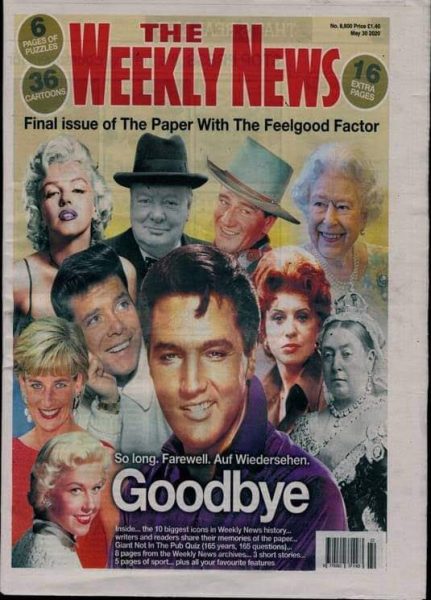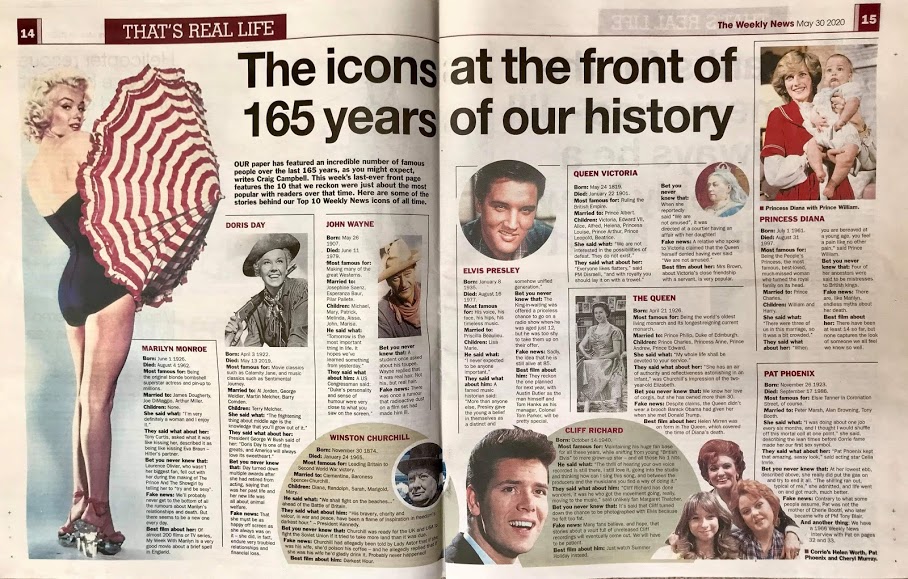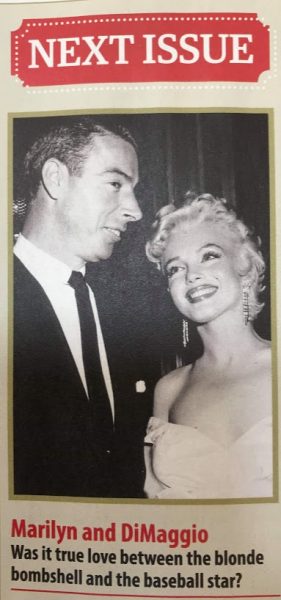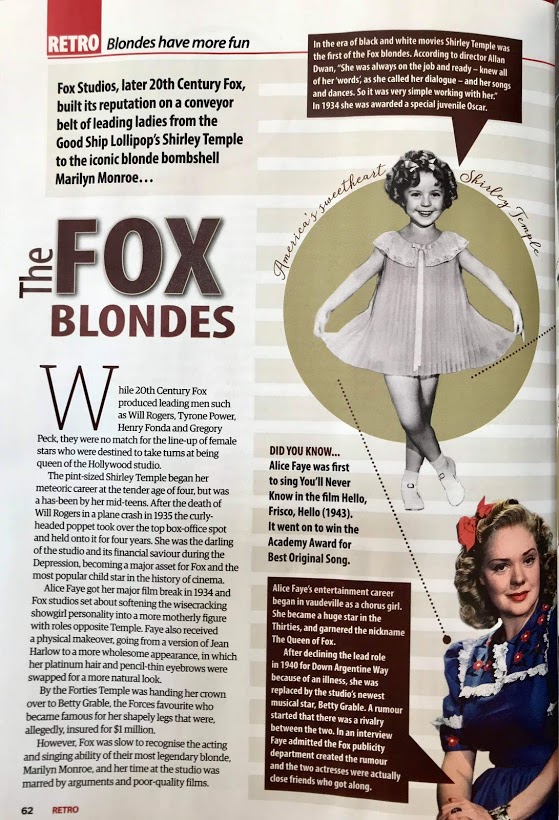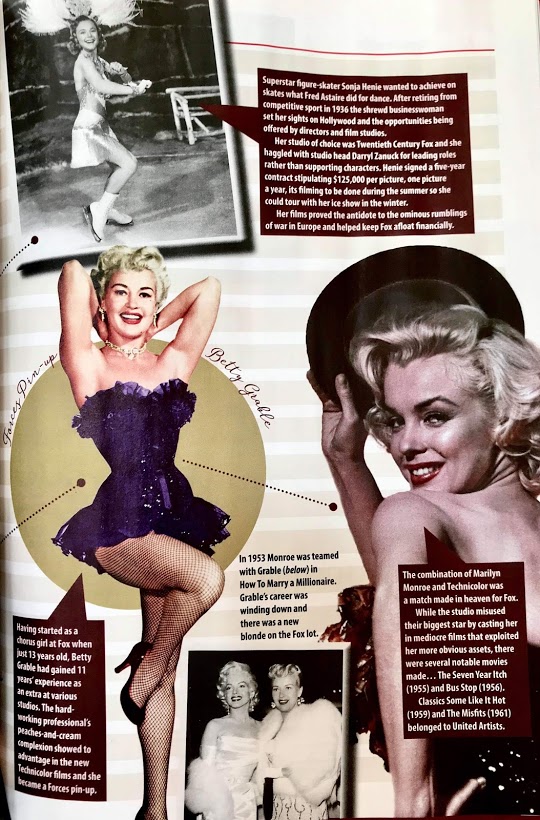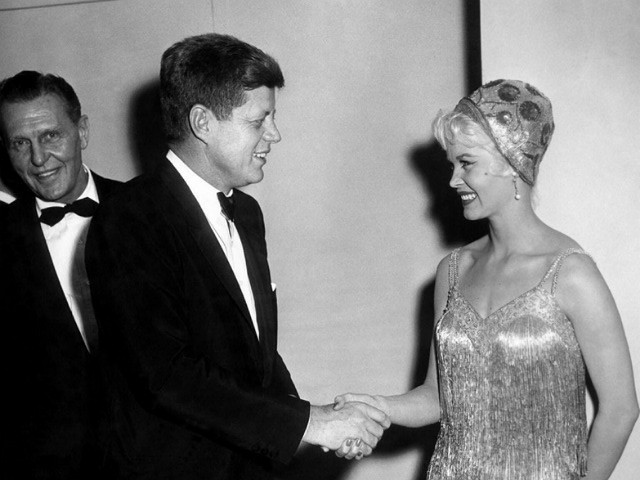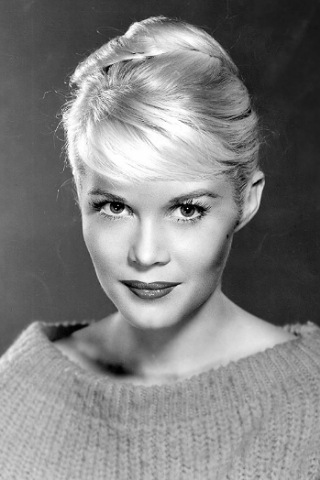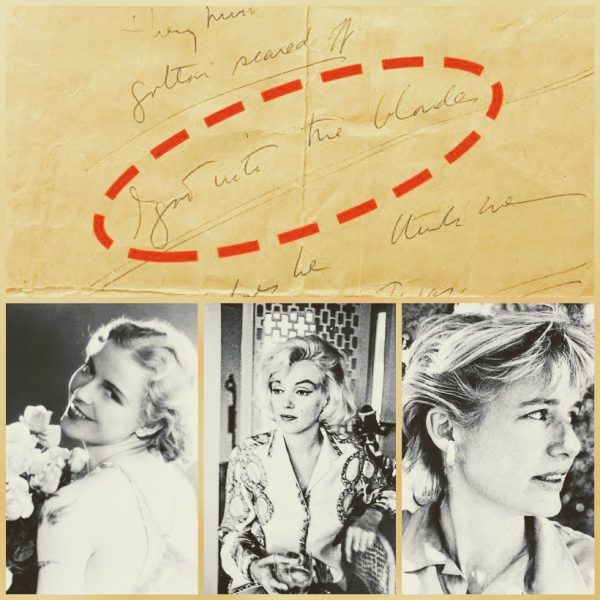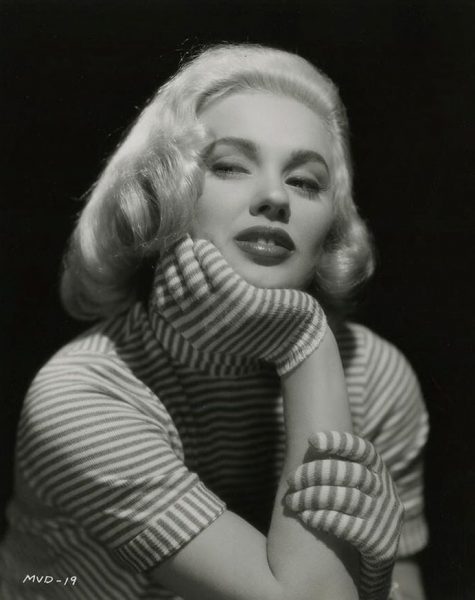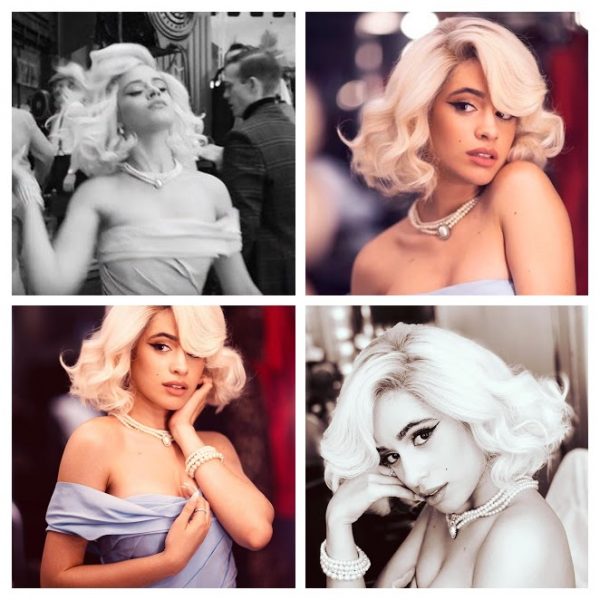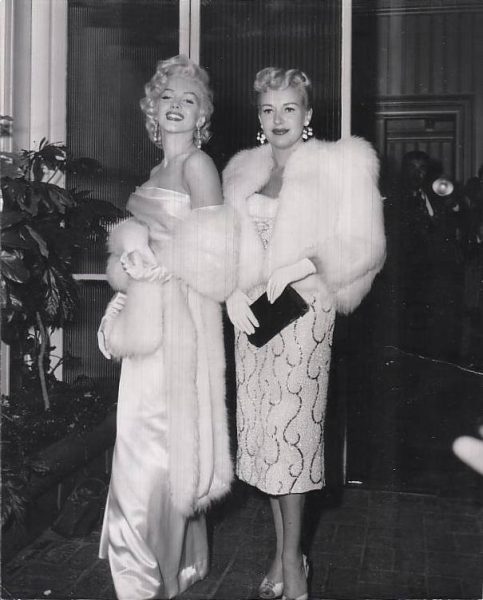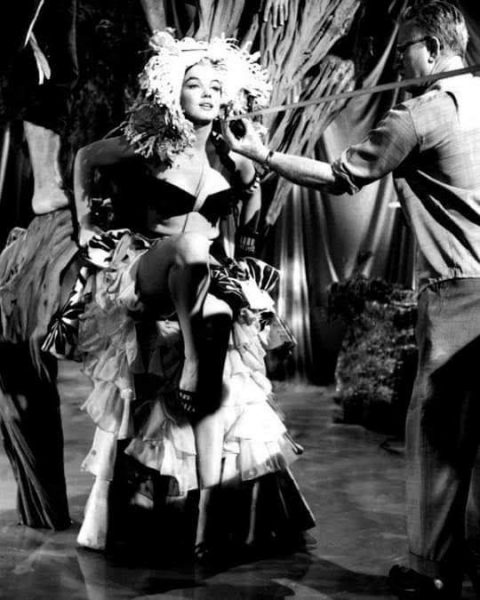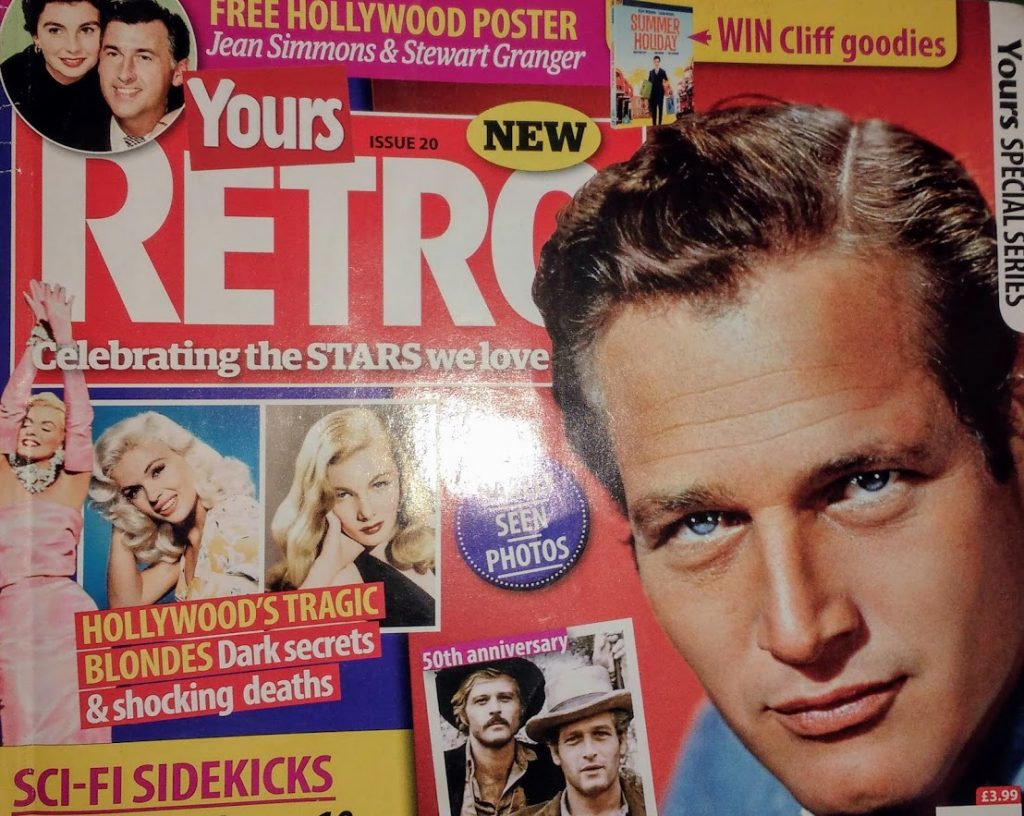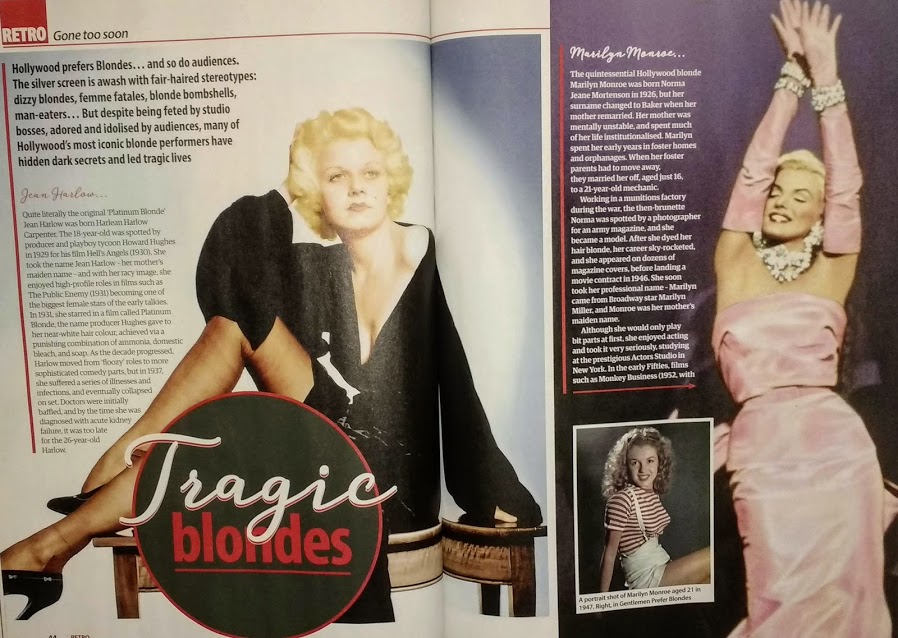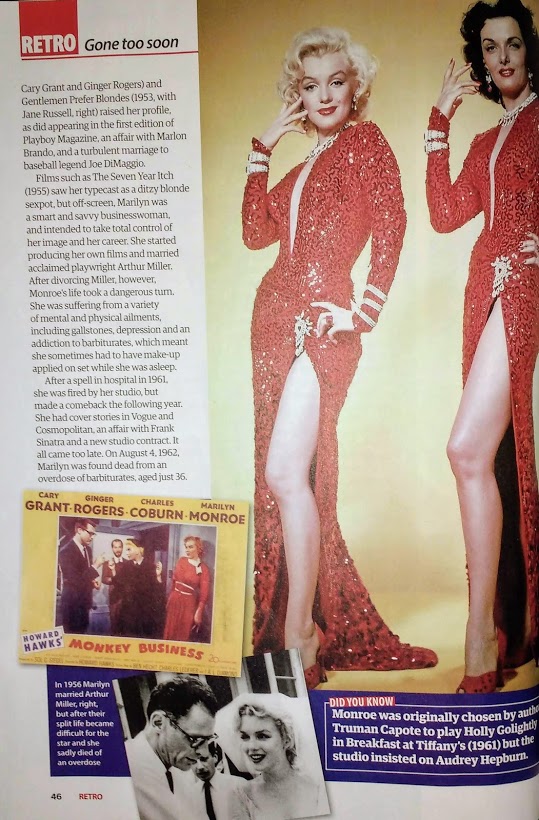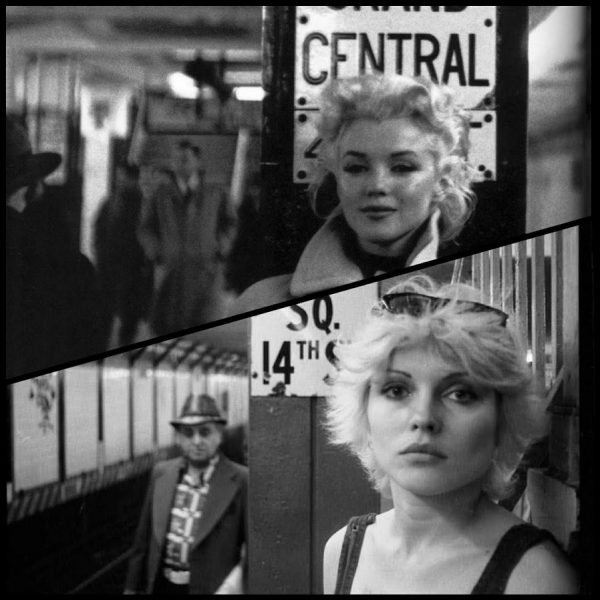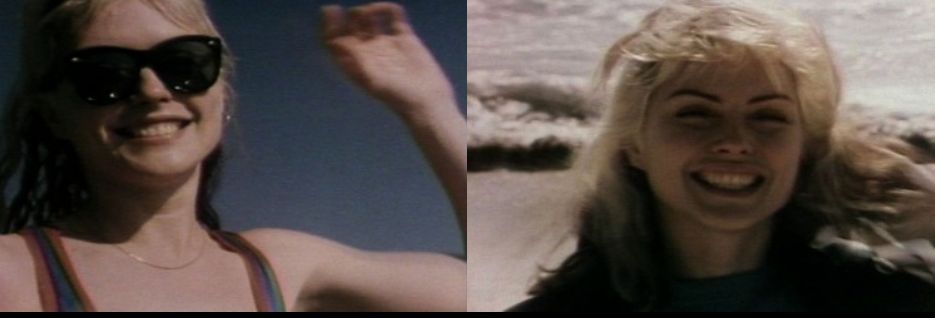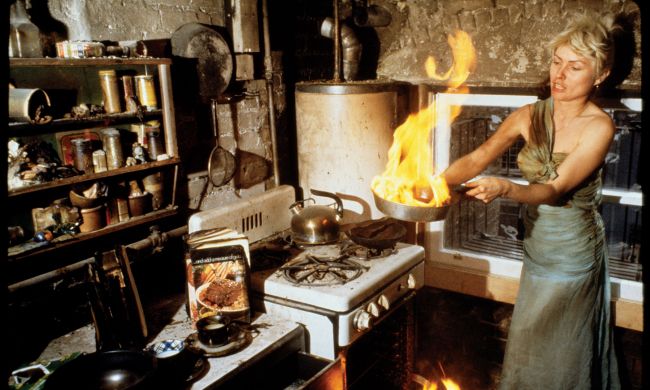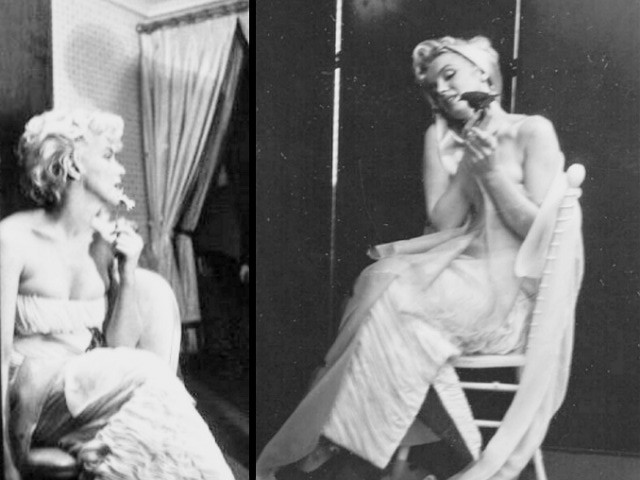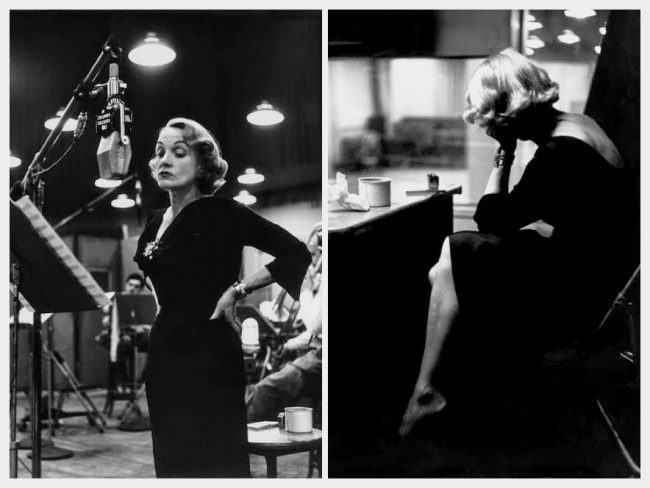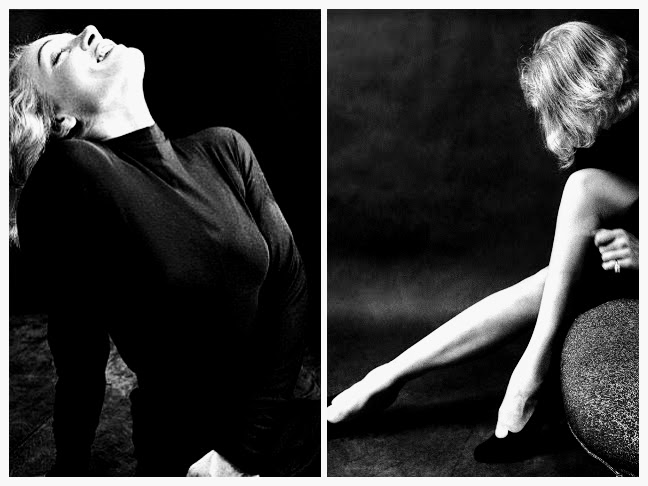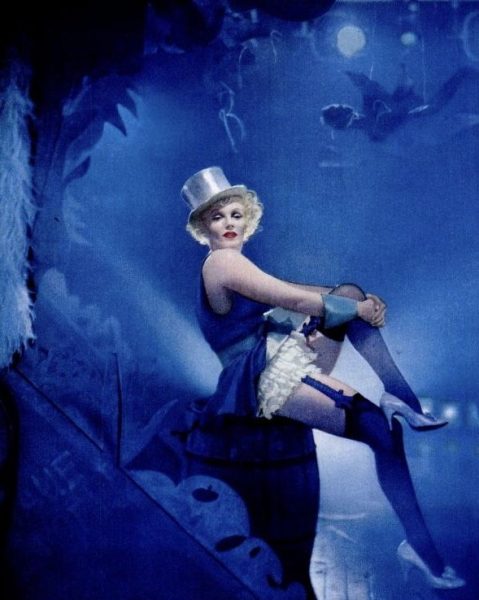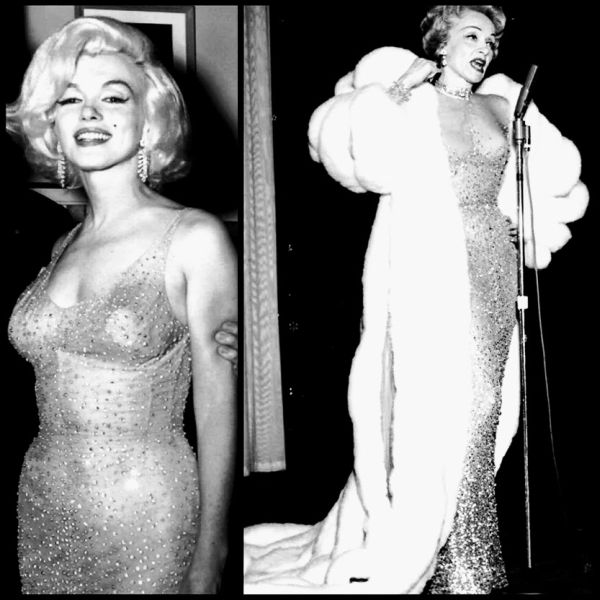Film historian Jeanine Basinger is not a great fan of Marilyn – in her 2008 book, The Star Machine, she made the puzzling claim that Monroe was unpopular with filmgoers, though the statistics tell another story. Marilyn also rates a mention in Basinger’s latest book, The Movie Musical, in the context of Twentieth Century Fox’s long line of blonde musical stars.
“A discussion of Fox blondes, from [Alice] Faye to Monroe, defines the Fox musical factory system, but it has to begin with a blonde who started the trend but is seldom included in the pack. She’s a very little blonde: Shirley Temple. All the famous musical Fox blondes overlapped in film … [June] Haver appeared with Monroe in Love Nest (1951) and [Betty] Grable, the most famous musical star of them all, gave a boost to Monroe in How to Marry a Millionaire (1953.) The Fox blondes were powerhouses: Temple, Faye, Grable, and Monroe were all top-ten box office draws … Faye is closer in looks to Marilyn Monroe – the big, wide-set eyes, the lush mouth, and the vulnerable look combined with a zaftig body. [Grable was smaller, leaner and zippier – she gave off the energetic zeitgeist of the war years.)
Marilyn Monroe was neither a great singer or a great dancer, but she was good enough. Everyone accepted her breathy vocals as part of who she was, and her dancing was made into far more than it was by the great choreographer Jack Cole. Cole gave her hand gestures, hip movements, and head turns that had rhythm and attracted an audience’s eye …
Monroe was something of a challenge for Twentieth Century Fox. The studio apparently didn’t originally see her as a musical star … Monroe made only two pure musicals for Fox, Gentlemen Prefer Blondes (1953) and There’s No Business Like Show Business (1954.) She also sang in Niagara (1953), River Of No Return (1954), Some Like It Hot (1959), and Let’s Make Love (1960), usually with some dancing connection …
Monroe as a musical star in a typical Fox musical was not the Monroe who is usually defined as vulnerable, with a sad and wistful quality, a soul yearning for understanding while suffering the cruelties of an uncaring world … In both Gentlemen Prefer Blondes and There’s No Business Like Show Business, Monroe was self-confident, playing a woman who knew how to use men if she had to in order to achieve her career goals. Monroe has one enduring solo (with a chorus of men): her immortal ‘Diamonds Are a Girl’s Best Friend’ …
The best movie by which to evaluate Monroe as a musical performer is There’s No Business Like Show Business. She’s surrounded by top-drawer names who’ve each spent a lifetime in the game … Monroe doesn’t have the musical chops of a single one of these players. She is, however, Marilyn Monroe. What she’s got doesn’t necessarily need musical chops, and she’s not a terrible singer/dancer, just not a highly skilled one … Cole’s choreography is constructed to show off Monroe’s body and to use the audience’s established sense of her as a sex object, but without being offensive about it …
‘After You Get What You Want’ has a bold lyric that feigns innocence … [Monroe] looks nude, and she’s in the best shape of her life … She’s beautiful and young and lush, all pure sex, and yet despite all this, there’s a strange air of innocence about her. That was the thing Monroe had that made her famous. It wasn’t just sexiness, though she had that in abundance …
Monroe’s second song is a full-out production number with elaborate costumes and a chorus of dancers – a Cuban thing with costumes, bongo drums, and palm trees. There’s a full choreography for the ensemble, and it’s too much for Monroe … Monroe handles ‘Heat Wave’, but she didn’t need all the clutter around her.
‘Lazy’ is a PhD thesis. It’s played as a rehearsal for a number to be done by Monroe, [Donald] O’Connor, and [Mitzi] Gaynor. Monroe is dressed in tight capri pants, a low-cut V-neck top, and a brightly coloured cummerbund. She lolls on a chaise longue, singing the song in a languid style. While she sings, draping herself around the sofa … the other two dance around her … The less she does, just showing off her body, the more they do, showing off their superb dancing. It’s a musical contrast: sex vs. talent. And it’s devilishly clever from a business point of view …
Marilyn Monroe ended the Fox blonde cycle. She became too big for its limiting label, and the time for the concept was over, as the studio moved towards its death. She was never defined by her musical performances, and her career didn’t impact musical history much, but it did impact the career of the woman originally put under contract to become the next Fox blonde: the talented Sheree North, who is practically unknown today …”
